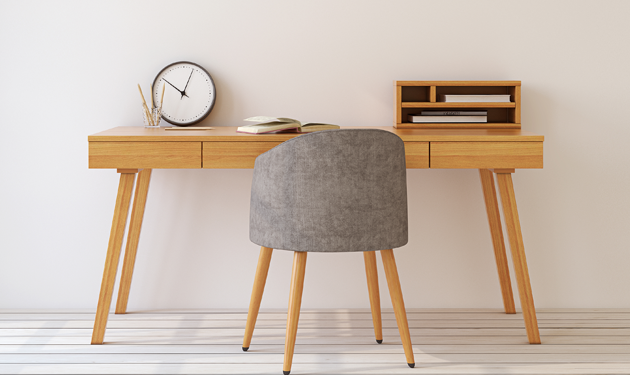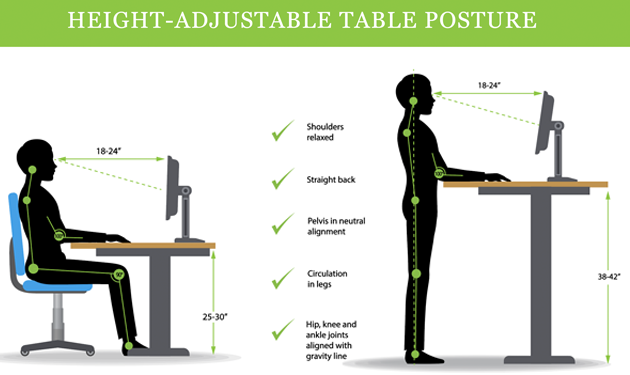Comfort and efficiency are fundamental when looking to set up a home office in your apartment or townhouse.
To assist you set up your work from home environment, please use the following as a simple yet effective office ergonomics checklist that you can carry out at home, to make sure you’re comfortable, safe and productive.
- Posture – Activity – Exercise
- Maintain proper posture, paying careful attention to positioning of head, neck/spine, arms/wrists, hips/thighs and feet. Basically, ensure the small of your back is supported, your shoulders relaxed (not slumped, not elevated), and that there is no pressure under your thighs;
- Alternate between different postures on a regular basis;
- When keyboarding, use minimum force while striking the keys;
- Keep a neutral position, where the forearms, wrists and hands are in a straight line;
- Avoid awkward reaching for work tools such as telephone, mouse and reference materials;
- Avoid resting elbows, forearms or wrists on hard surfaces;
- Take frequent mini-breaks throughout the day to give muscles and joints a chance to rest and recover;
- Alternate between work activities which use different muscle groups to avoid overuse;
- Give eyes a break by closing them momentarily, gazing at a distant object and blinking frequently.

- Lighting – Air – Noise
- Maintain appropriate light levels for specific tasks. More illumination is usually needed to read a document than a computer screen;
- Reduce or eliminate glare by using window shades, dimmers on overhead lighting and anti-glare filters for computers;
- Adjust the contrast and brightness on your computer screen to a comfortable level;
- Clean the computer screen and other surfaces regularly;
- Reduce the number of dust collecting items like papers and files on your desk;
- Maintain a comfortable temperature by using layers of clothing or a portable fan or heater;
- Identify distracting noises and try headphones, ear plugs, soft music or a quiet fan to reduce or mask the noise.
- Work Style – Organisation – Breaks
- Reduce stress by planning ahead and setting realistic expectations for what you can accomplish during the workday;
- Organise your workload to help even out busy and slow times, to avoid feeling “swamped”;
- Vary tasks to make the day more interesting;
- Avoid long periods of repetitive activity. For example, alternate computer work with other tasks like phone calls;
- Organise equipment, supplies and furniture in the most efficient arrangement for daily tasks;
- Acknowledge ideas and accomplishments of co-workers on a regular basis;
- Develop stress reduction and relaxation techniques which work for you at the office and at home;
- Take mini-breaks that re-energise, invigorate and refresh.
Disclaimer: This article provides general advice only and does not take into account individual circumstances.



